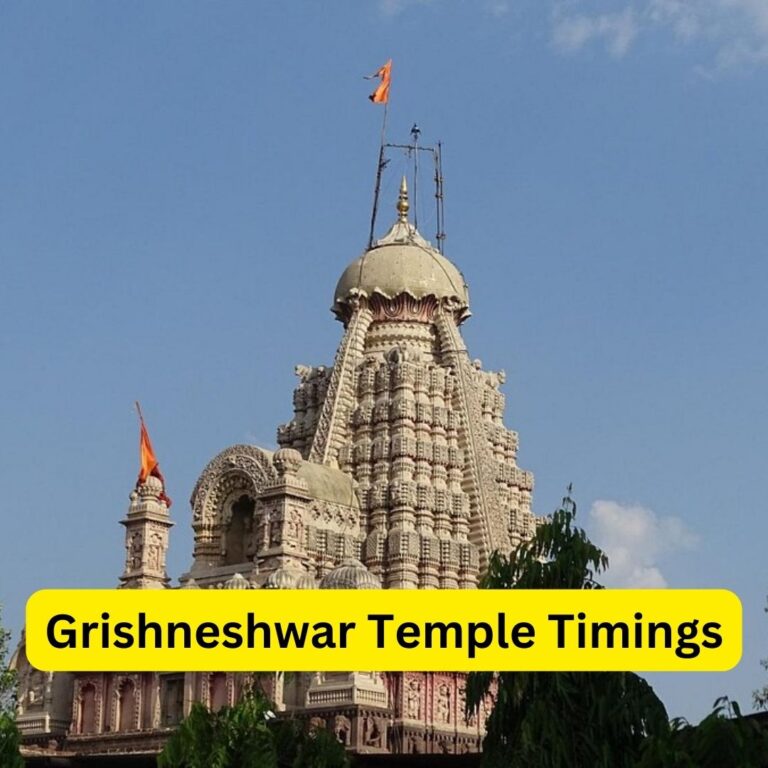Know the full information about Grishneshwar Temple Timings. Grishneshwar temple is located in the village of Verul, near the Ellora Caves in Maharashtra.
Learn more about Banke Bihari Mandir Timing 2024: Divine abode of Lord Krishna
Learn more about Kashi Vishwanath Temple Timings: Experience Unforgettable Darshan
Learn more about Tulsi Vivah Mangalashtak in Marathi: Sacred Marriage of Tulsi and Vishnu
Grishneshwar Temple, also known as the Grishneshwar Jyotirlinga Temple, is one of the 12 Jyotirlingas of Lord Shiva and a revered Hindu pilgrimage site. Located in the village of Verul, near the Ellora Caves in Maharashtra, this temple attracts thousands of devotees and tourists every year.
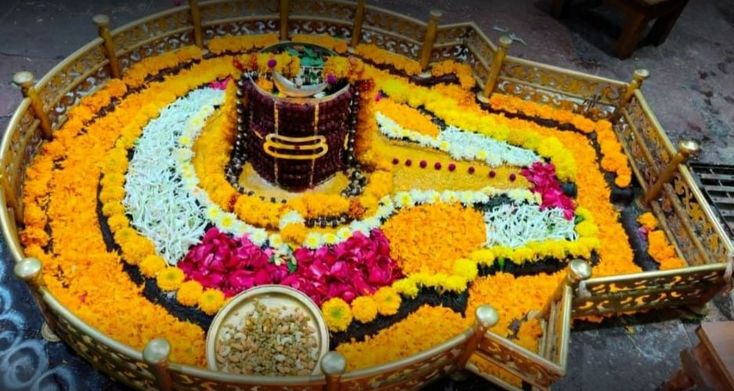
If you are planning to visit this temple, you might be wondering about the Grishneshwar Temple timings, history, architecture, and significance. In this blog post, we will answer all these questions and provide you with some useful tips for your visit.
What are Grishneshwar Temple Timings?
Grishneshwar Temple Timings: Experience the magic of the 12 Jyotirlingas at the right time. The temple performs various rituals and aartis throughout the day. The temple opens at 05:30 am in the morning and closes at 09:30 pm in the evening. The Grishneshwar Temple timings are as follows:
- Mangal Aarti: 04:00 am
- Jalhari Saghan: 08:00 am
- Maha Prasad: 12:00 pm
- Jalhari Saghan: 04:00 pm
- Evening Aarti (Summer): 07:30 pm
- Evening Aarti (Winter): 05:40 pm
- Night Aarti: 10:00 pm
Remember: The temple remains open for longer hours during the month of Shravan, which falls during August and September. During this month, the temple is open from 03:00 am to 11:00 pm.
Grishneshwar Temple Story
The Grishneshwar Temple story is deeply intertwined with a sacred mythological narrative. According to the ancient Hindu scriptures, particularly the Shiva Purana, the story of Grishneshwar Temple is as follows:
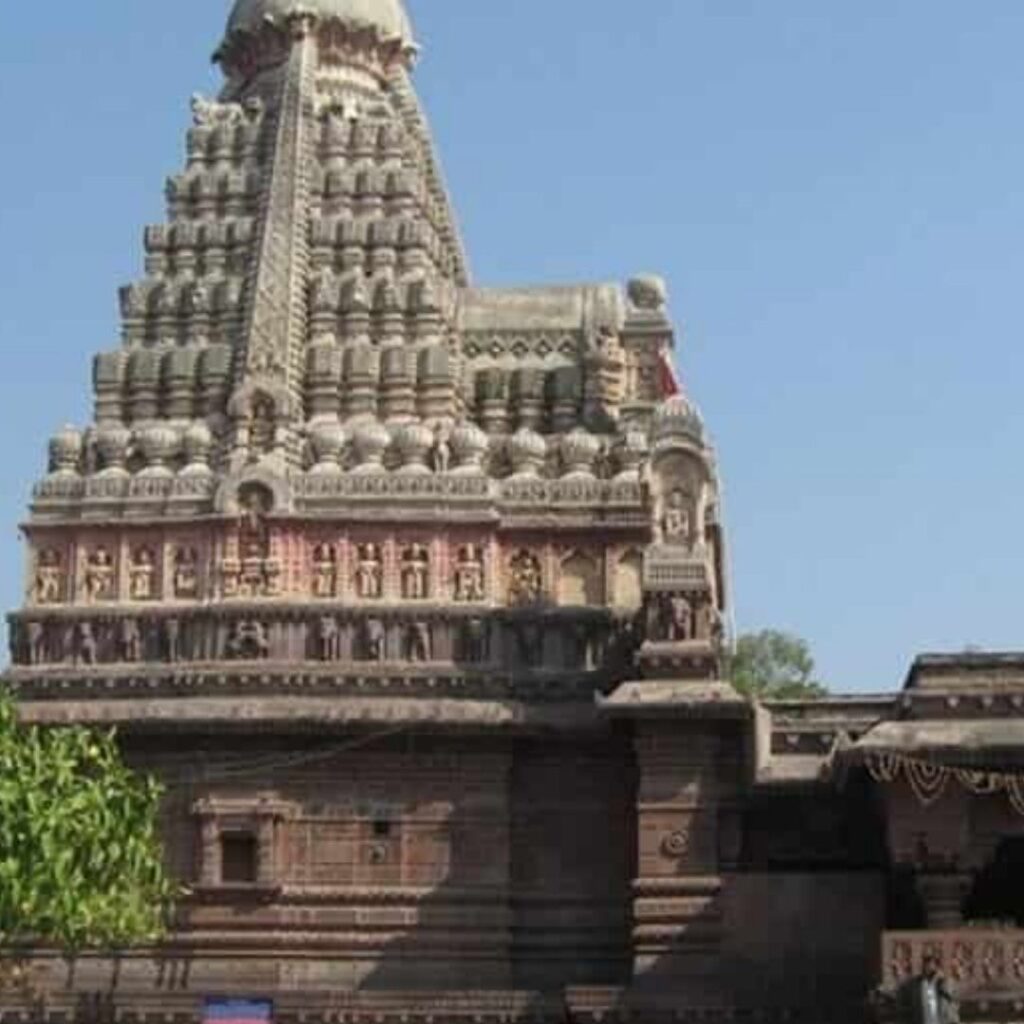
Long ago, in a celestial realm known as Kailash, Lord Shiva and his divine consort Parvati were residing. One day, a heated argument ensued between the two, leading to a wager. To settle the disagreement, Lord Shiva decided to test the devotion of humans on Earth.
He declared that anyone who could travel around the world three times in a single day would be declared the winner. Parvati, concerned that this challenge would be impossible for humans to achieve, sought the assistance of Lord Vishnu.
Lord Vishnu took the form of a young brahmin boy and approached Lord Shiva, asking for his help in completing the task. Lord Shiva, impressed by the boy’s devotion, granted him the ability to complete the challenge.
As the brahmin boy was circumambulating the world, he came across a poor and elderly couple who were in distress. The couple was none other than the sage Gautama and his wife, Ahilya. They were caught in a terrible storm and were desperately seeking shelter.
The brahmin boy, in his haste to complete the task, paid no attention to their pleas and continued his journey. Upon his return, Lord Shiva declared the brahmin boy the winner, and Parvati conceded defeat.
However, Lord Vishnu, now in his true form, was overcome with guilt for not having helped the suffering couple. To atone for his neglect, he sought the sage Gautama and asked for forgiveness. In his deep remorse, Lord Vishnu decided to perform penance at the sacred site where the elderly couple had sought shelter.
The intensity of his devotion created an immense heat, which eventually led to the emergence of a divine light. This light was none other than the Jyotirlinga of Lord Shiva, who manifested himself to bless Lord Vishnu and the sage couple. He named the Jyotirlinga as Grishneshwar, meaning “the Lord of Intense Heat”.
Grishneshwar Temple History
The temple structure was destroyed by the Delhi Sultanate in the 13th and 14th centuries. The temple went through several rounds of rebuilding followed by re-destruction during the Mughal-Maratha conflict. It was rebuilt in the current form in the 18th century under the sponsorship of queen Ahilyabai Holkar of Indore, after the fall of the Mughal Empire.
Grishneshwar Temple Architecture
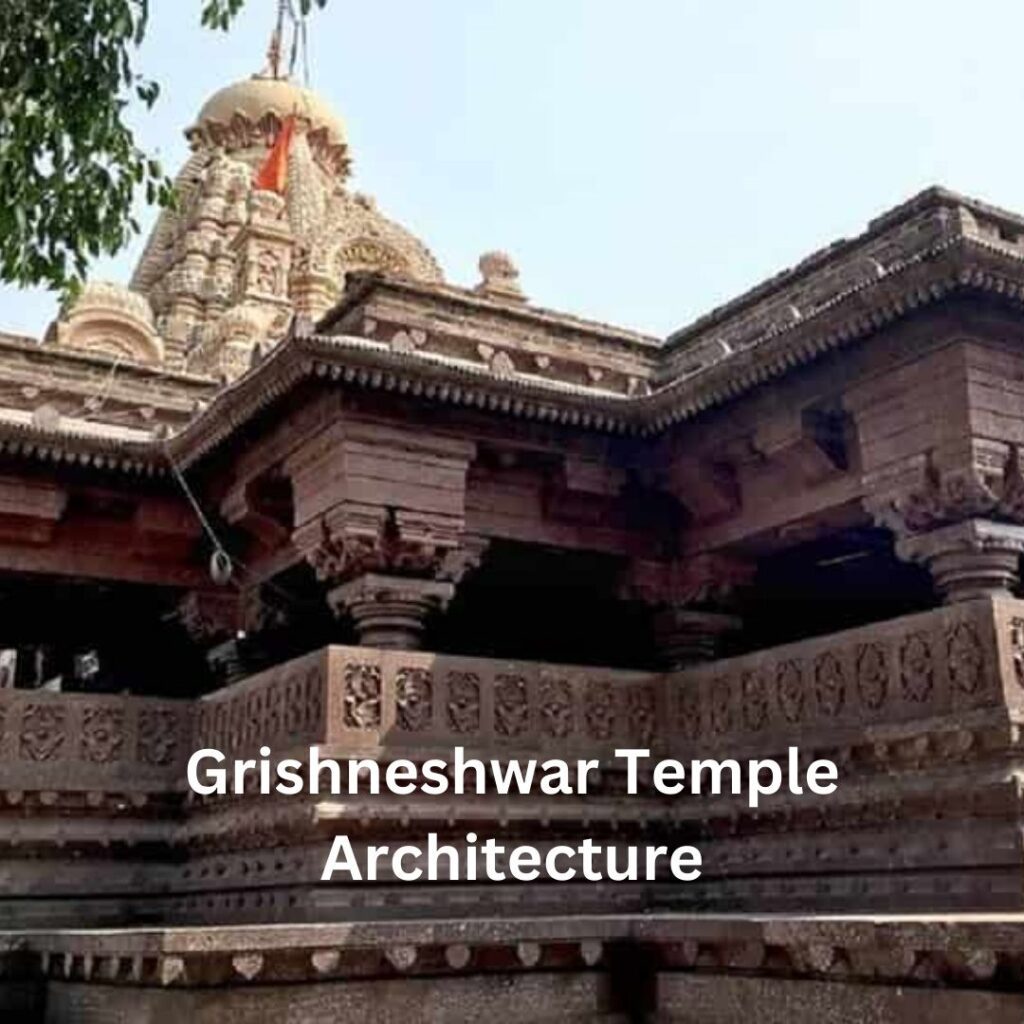
- The Grishneshwar Temple is built in the Hemadpanthi style of architecture, which is characterized by the use of locally available black basalt stone and lime mortar.
- The temple has a five-tiered shikhara (spire) that rises to a height of 240 feet.
- The temple complex consists of a main shrine, a Nandi mandapa (hall), a sabha mandapa (assembly hall), and a pradakshina patha (circumambulatory path).
- The main shrine houses the Jyotirlinga of Lord Shiva, which is about six feet high and adorned with flowers and ornaments.
- The sanctum sanctorum is decorated with intricate carvings of various deities, scenes from Hindu mythology, and floral motifs.
- The Nandi mandapa has a large statue of Nandi, the bull mount of Lord Shiva, facing the main shrine.
- The sabha mandapa has 24 pillars that support a flat roof.
- The pradakshina patha has a series of small shrines dedicated to various forms of Lord Shiva and other Hindu gods and goddesses.
Grishneshwar Temple Significance
The Grishneshwar Temple is one of the most sacred and important pilgrimage sites for the Hindus. It is believed that visiting this temple can bestow the following benefits:
- It can grant salvation (moksha) to the devotees who worship Lord Shiva with utmost devotion and sincerity.
- It can fulfill the desires and wishes of the devotees who seek the blessings of Lord Shiva and Parvati.
- It can cure various diseases and ailments of the body and mind, especially those related to the eyes, ears, and throat.
- It can protect the devotees from evil influences and negative energies.
- It can enhance the spiritual growth and enlightenment of the devotees who meditate on the Jyotirlinga.
Grishneshwar Temple Travel Tips
If you are planning to visit the Grishneshwar Temple, here are some useful tips to make your trip smooth and enjoyable:
- The best time to visit the temple is during the winter season, from October to March, when the weather is pleasant and comfortable.
- The temple is located near the Ellora Caves, which is a UNESCO World Heritage Site and a must-visit attraction. You can combine your visit to the temple with a tour of the caves, which showcase the magnificent rock-cut sculptures and paintings of Buddhism, Hinduism, and Jainism.
- The temple is about 30 km away from Aurangabad city, which is well-connected by road, rail, and air. You can hire a taxi, bus, or auto-rickshaw from the city to reach the temple. Alternatively, you can also book a guided tour package that includes the temple and other nearby attractions.
- The temple has a strict dress code for the devotees who wish to enter the sanctum sanctorum. Men have to go bare-chested and wear a dhoti or a lungi, while women have to wear a saree or a salwar kameez. You can rent these clothes from the shops outside the temple for a nominal fee.
- The temple has a locker facility where you can keep your belongings safely. You are not allowed to carry any leather items, electronic gadgets, cameras, or footwear inside the temple premises.
- The temple has a canteen where you can get simple and hygienic vegetarian food at a reasonable price. You can also find many restaurants and hotels near the temple that offer a variety of cuisines and accommodation options.
- The temple has a souvenir shop where you can buy religious items, books, CDs, and handicrafts as a memory of your visit.
- The temple is very crowded during the festivals of Mahashivaratri, Shravan, and Kartik, when thousands of devotees throng the temple to offer prayers and perform rituals. If you want to avoid the rush, you can visit the temple on weekdays or during the off-season.
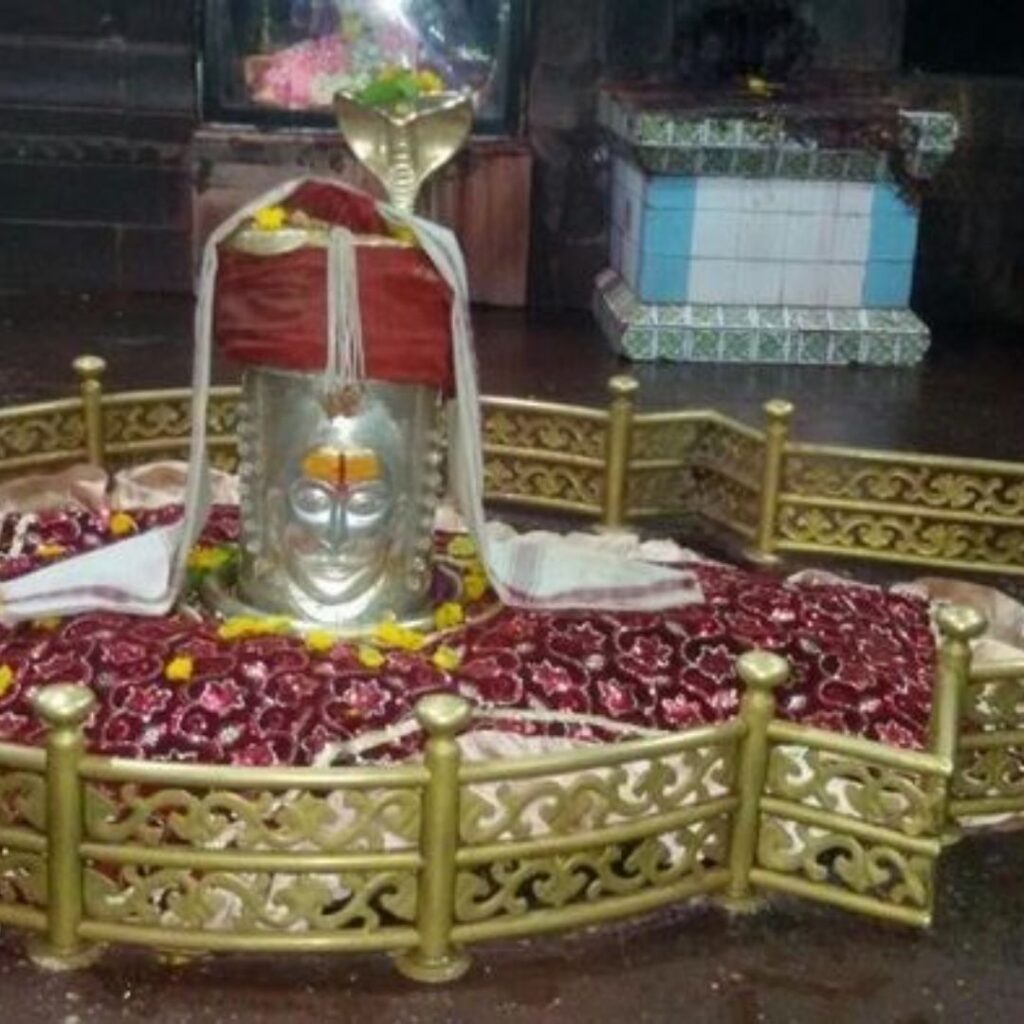
Aurangabad to Grishneshwar temple distance
The distance between Aurangabad and Grishneshwar Temple depends on the mode of transportation you choose:
- By car: The shortest driving distance between Aurangabad and Grishneshwar Temple is about 29 kilometers via SH 60 and NH 52. The drive time can range from 25 to 35 minutes depending on traffic conditions.
- By bus: Several buses run between Aurangabad and Grishneshwar Temple, with travel times ranging from 30 minutes to an hour depending on the route and stops. The fare is usually very affordable.
- By taxi: Taking a taxi is the most convenient option, especially if you are traveling with luggage or a group of people. The fare will start from around ₹500 and the travel time will be similar to driving yourself.
Here are some additional things to keep in mind when traveling from Aurangabad to Grishneshwar Temple:
- The road conditions are generally good, but there may be some traffic congestion, especially during peak hours.
- If you are taking a bus, be sure to check the schedule in advance and purchase your tickets early, as they can sell out quickly.
- If you are taking a taxi, be sure to negotiate the fare in advance to avoid any surprises.
I hope this information helps you plan your trip from Aurangabad to Grishneshwar Temple!
Frequently Asked Questions (FAQs)
Q.1 What are the timings of the Grishneshwar Temple?
Ans: The Grishneshwar Temple is open for darshan (viewing the deity) from 6:00 AM to 8:00 PM every day. However, there are specific timings for different pujas and rituals. Here’s a quick breakdown:
- Morning Darshan: 6:00 AM to 12:00 PM
- Evening Darshan: 4:00 PM to 8:00 PM
- Maha Abhishek (grand offering): 11:00 AM
- Shringar Darshan (special decoration of the deity): 7:00 PM
Q.2 What is the story behind the Grishneshwar Temple?
Ans: The Grishneshwar Temple has a fascinating mythological story associated with it. According to the Shiva Purana, Lord Shiva and Parvati once had a wager to see who could travel around the world three times in a single day. Lord Vishnu, disguised as a young Brahmin boy, took on the challenge for Parvati.
However, on his journey, he came across the sage Gautama and his wife Ahilya who were caught in a storm. He chose to continue his journey instead of helping them. Upon reaching Lord Shiva, he was declared the winner, but Vishnu felt immense guilt for neglecting the elderly couple.
To atone for his mistake, he performed intense penance at the very spot where Gautama and Ahilya had sought shelter. His devotion pleased Lord Shiva, who manifested himself as a Jyotirlinga (lingam of light) at that very place. The temple was built to enshrine this sacred Jyotirlinga and is named after Lord Grishneshwar, meaning “the Lord of Intense Heat.”
Q.3 What is the significance of the Grishneshwar Temple?
Ans: The Grishneshwar Temple is one of the 12 Jyotirlinga shrines in India, dedicated to Lord Shiva. These shrines are considered to be particularly powerful and sacred. Devotees believe that visiting the Grishneshwar Temple can bring blessings, remove sins, and fulfill wishes.
Q.4 What are the rituals performed at the Grishneshwar Temple?
Ans: Several pujas and rituals are performed at the Grishneshwar Temple throughout the day. Some of the most common rituals include:
- Abhishek: Offering water, milk, and other sacred items to the Jyotirlinga.
- Archana: Offering prayers and chanting mantras to Lord Shiva.
- Darshan: Viewing the Jyotirlinga and seeking blessings.
- Special pujas: Performed on specific occasions and festivals, such as Maha Shivaratri and Raksha Bandhan.
Q.5 What is the dress code for visiting the Grishneshwar Temple?
Ans: Visitors are expected to dress modestly when visiting the Grishneshwar Temple. Men should avoid wearing shorts, sleeveless shirts, and hats. Women should wear sarees or salwar kameez, and avoid revealing clothes.
Q.6 Can I offer food at the Grishneshwar Temple?
Ans: Offering food (prasad) is a common practice at Hindu temples. However, at the Grishneshwar Temple, it is only allowed during specific pujas and festivals. It is best to check with the temple authorities before bringing any food offerings.
Q.7 Is photography allowed inside the Grishneshwar Temple?
Ans: Photography is strictly not allowed inside the sanctum sanctorum of the Grishneshwar Temple. However, you can take pictures in the temple complex and surrounding areas.
Q.8 How to reach the Grishneshwar Temple?
Ans: The Grishneshwar Temple is located in the town of Ellora, about 30 km from Aurangabad in Maharashtra, India. The nearest airport is Aurangabad Airport, which is well-connected to major cities in India. You can also take a train to Aurangabad Junction and then hire a taxi or rickshaw to the temple.
Q.9 Where to stay near the Grishneshwar Temple?
Ans: There are several hotels and lodges in Ellora and Aurangabad where you can stay during your visit to the Grishneshwar Temple. Some popular options include:
- MTDC Resort Ellora: Located right next to the temple complex, this resort offers comfortable accommodation and stunning views of the Ellora Caves.
- Taj Aurangabad: A luxurious hotel located in the heart of Aurangabad, offering excellent amenities and service.
- Lemon Tree Hotel Aurangabad: A mid-range hotel with a modern ambiance and good facilities.
We hope this blog post has given you a comprehensive overview of the Grishneshwar Temple timings, history, architecture, and significance. If you have any questions or feedback, please feel free to leave a comment below. We would love to hear from you. Thank you for reading and happy traveling!
